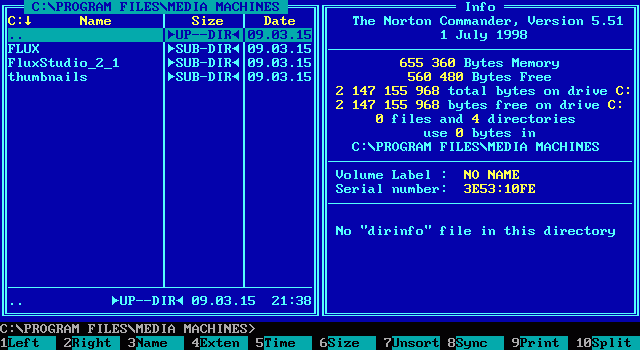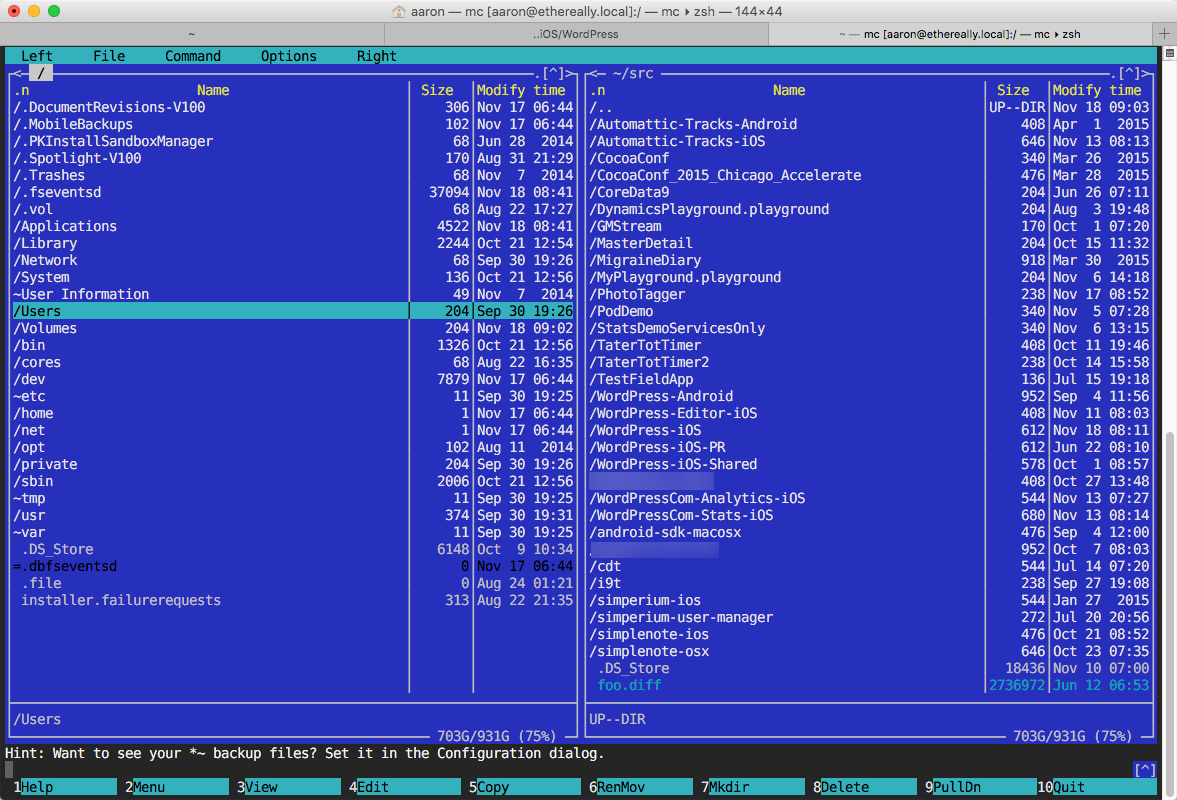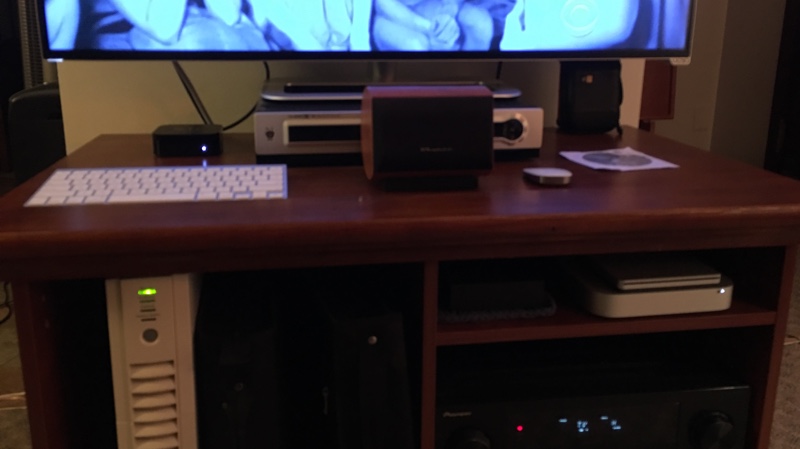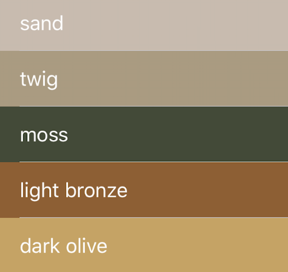Probably not the best way to abbreviate “no jalapeños” on a receipt.

If you’ve been around long enough to have used Microsoft DOS as your primary operating system, you might remember Norton Commander.

Norton Commander 5.51 running on MS-DOS 5
Managing files in DOS was a pain in the butt without something even remotely graphical. I loved the two panes and simplistic navigation in folders. In fact I think Norton Commander made me better at command line stuff after I got a visualization of the file structure.
After I got into Linux/Unix/Mac OS X I was so tickled when I found Midnight Commander. MC is a port (only visually) of the original Norton Commander. It’s awesome and I’ve used it for years.

Midnight Commander 4.8.13 running on Mac OS X 10.11.1
Recently I found a replacement for Finder on Mac OS X that looks shockingly similar. It’s called Commander One.

Midnight Commander is free and open source – which means you can dig into how it works and help fix bugs you might find. It’s a pretty stable product though and still actively worked on. Commander One is free but not open source. There are “Pro packs” you can purchase to add additional functionality.

I have one of the new Apple TVs and I really do enjoy it. Having been a Roku-only house its nice to be able to get to some of the things only in the Apple world. I have AirPlay on my Pioneer receiver but it doesn’t work quite right all the time – but it works great on the Apple TV!
So there is one annoyance I can’t get around easily. I use a Mac mini in my entertainment stand as a server, my DVR (with EyeTV & HDHomeRun tuners), a webcam server (EvoCam) and a weather station data collector. When I watch DVDS and recorded TV through EyeTV I use the “old” Apple remote. The problem? The new Apple TV responds to the infrared from the old remote!
I dug through the settings of the Apple TV and there is no way to turn off IR on it. So until this is fixed I either have to use black electrical tape to cover the receiver or do this:

Physical hack FTW!
Well, shit. Rdio was bought by Pandora and they’re going to shut down the service.
Stabby. Very stabby.
I’ve been goofing around with the Imagga API the past week and have been doing some fun stuff. It can take any image and analyze the colors and the subjects in it. Pretty slick!
Step 1 – Upload a photo

Step 2 – Let the API analyze the photo and come up with tags
{
“results”: [
{
“image”: “d487d2521bb4b948b860ce216c434230”,
“tags”: [
{
“confidence”: 26.336145269655205,
“tag”: “person”
},
{
“confidence”: 26.0971845554226,
“tag”: “caucasian”
},
{
“confidence”: 23.54227654205335,
“tag”: “adult”
},
{
“confidence”: 23.28269886958777,
“tag”: “happy”
},
{
“confidence”: 18.875687368248368,
“tag”: “clothing”
},
{
“confidence”: 18.155134932273736,
“tag”: “attractive”
},
Step 3 – Let the API analyze major colors in the photo

Step 4 – Profit!
I had a moment of introspection today as I sat in a pew at a good friend’s dad’s funeral: Death is much like chronic pain. A few years back, on a different blog of mine, I made this statement regarding chronic pain with my cluster headaches:
And lastly, the most important lesson I’ve learned? The pain reminds us that we’re alive. Without the pain we’d go through life not understanding what a gift it is to be able to relax without pain and distractions. That pain keeps me from being a sheep, tooling around life without knowing where I came from and where I want to go.
Death sucks but it reminds us we’re alive. Cherish the time you have with your living family and friends. Everything doesn’t have to be a party – but ever so often have a moment of reflection and smile when you’re having a good day.
<3

Ever have those days where you write or speak a word and the longer you stare at it or repeat it the less real it feels? There happens to be a term for that feeling – Semantic satiation.
Definition: [ source ]
Semantic satiation is a phenomenon whereby the uninterrupted repetition of a word eventually leads to a sense that the word has lost its meaning. Also known as semantic saturation or verbal satiation.
The concept of semantic satiation was described by E. Severance and M.F. Washburn in The American Journal of Psychology in 1907. The term was introduced by psychologists Leon James and Wallace E.
Repeat any word over and over and you’ll experience this.

When I worked in an office headphones were a requirement for me. I absolutely needed them to focus. I really don’t use headphones all that often anymore since I started working remote 2 1/2 years ago. Listening to music over decent speakers seemed to be enough. Lately I’m discovering I missed the power behind having the sound close to your head.
The past two weeks I’ve been using my headphones again to help with my attention & focus in the afternoons. My mornings start with using my treadmill under my desk to walk and work. Mid-day when I find my brain wandering, I stop working and do some sort of exercise. Now in the afternoons I’m finding putting on the noise-canceling headphones gives me the boost to wrap up the work for the day.
There’s something comforting with having the music close to your ears. I usually mix between the New EDM station on Rdio, a couple electronic stations on DI.fm and sometimes BPM on SiriusXM. Most music that has too many words doesn’t work too well for focus.
I’m still amazed after 30 months of working on dealing with ADHD I am still finding things to tweak. 🙂

I keep a curated playlist on Rdio of songs that are excellent for dancing at your standing desk. The playlist also works well for a particularly awesome dance party.
https://www.rdio.com/people/astralbodies/playlists/7569006/To_Dance_Shamelessly_at_a_Standing_Desk/
Enjoy! 🙂


